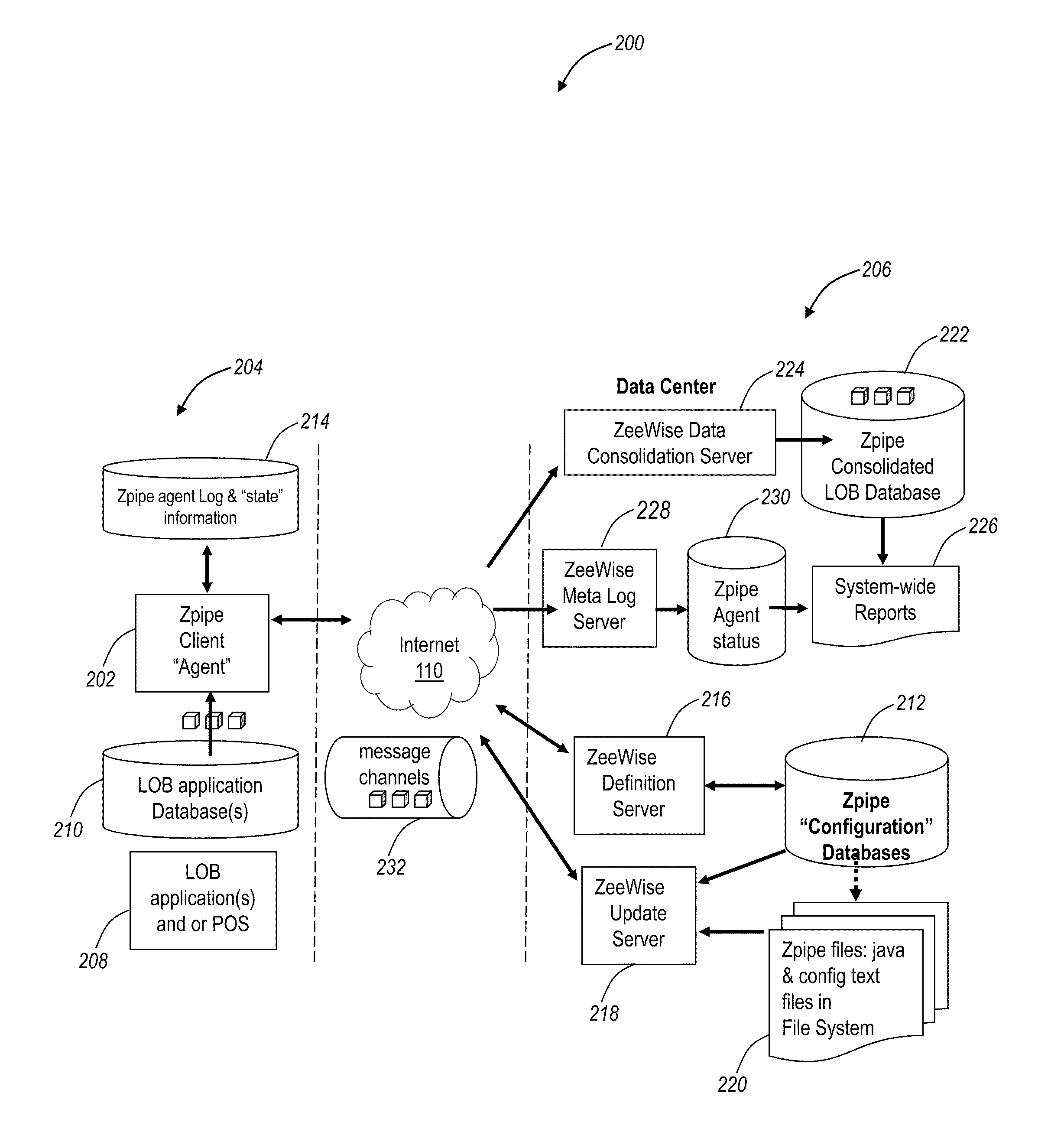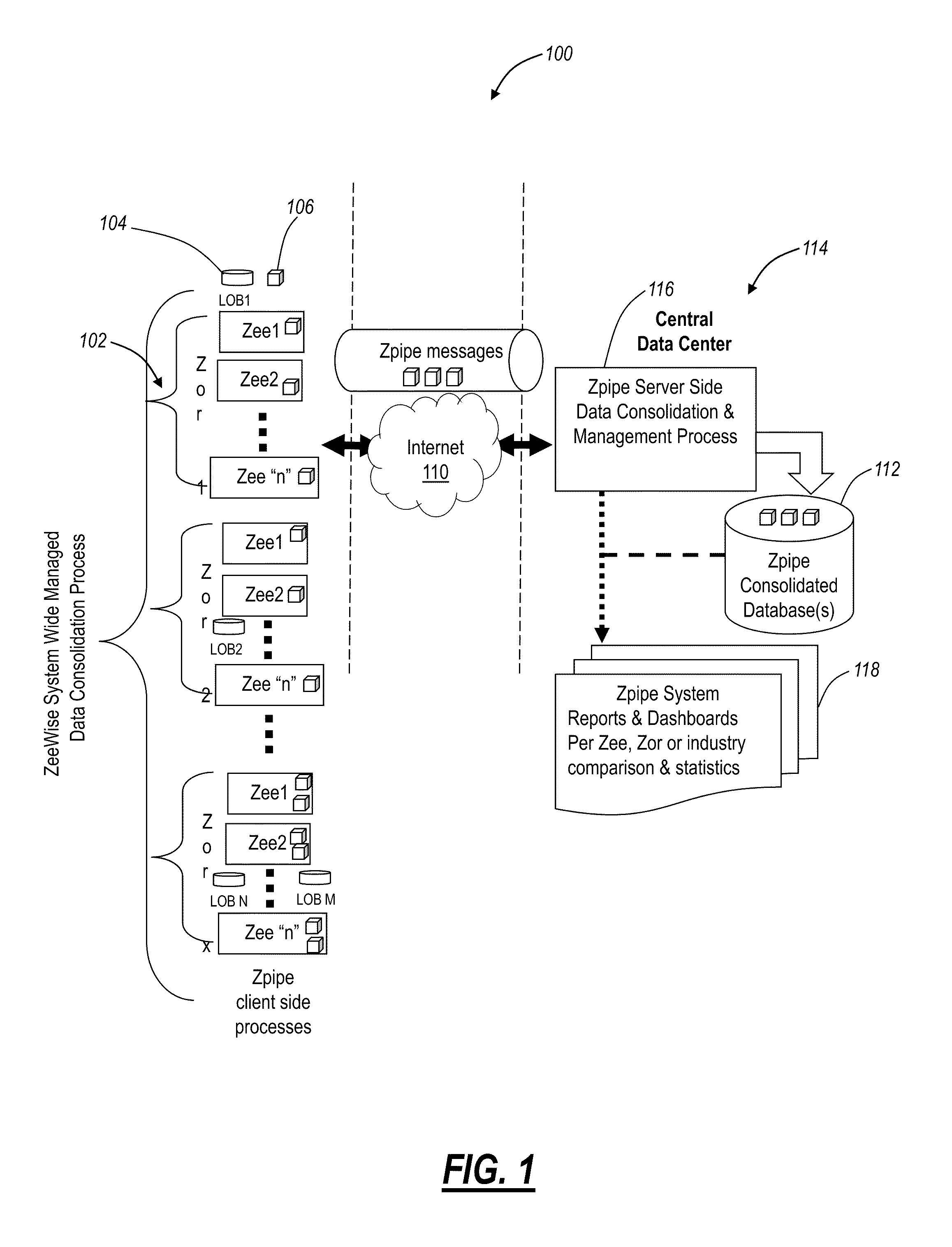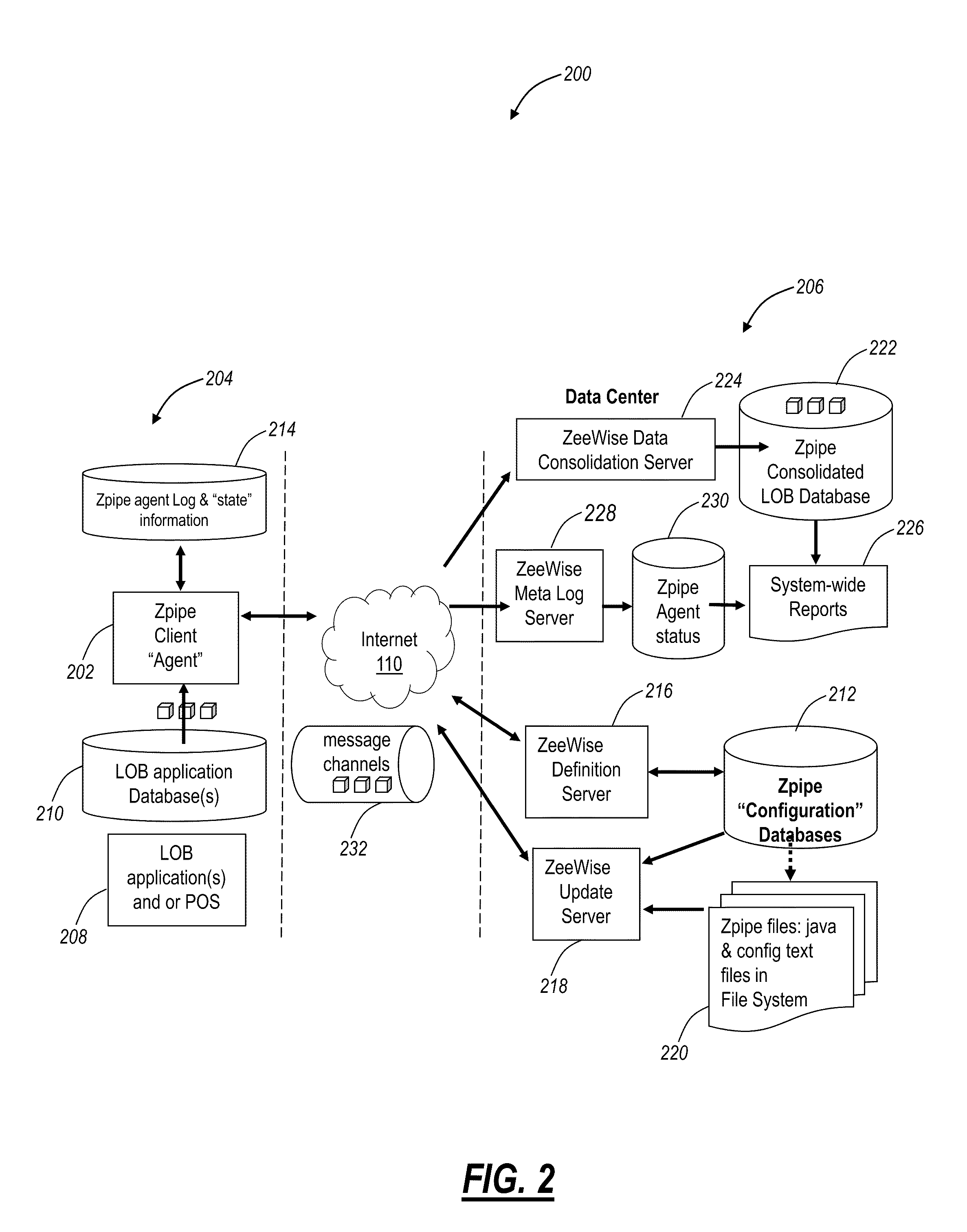Remote data collection systems and methods
a data collection and remote technology, applied in the field of remote data collection, can solve the problems of difficult collection, consolidation and reporting, and the inability of franchisees to compare themselves to peer groups and or regional norms within the concept or industry, and achieve the effects of increasing efficiency, effectiveness and overall profitability, quick adaptability, flexibility and performan
- Summary
- Abstract
- Description
- Claims
- Application Information
AI Technical Summary
Benefits of technology
Problems solved by technology
Method used
Image
Examples
Embodiment Construction
[0041]The remote data consolidation process of the present invention is flexible, yet comprehensive and complete while allowing for variability, complexity and individual requirements of a variety of LOB applications running in a variety of situations at remote sites. The unique and novel design features and attributes provided by the definition abstraction model of the invention allow these capabilities to be adapted to the variety of LOB applications without executable program code being introduced into the LOB or database applications. Additional benefits of this design allow a central administrator to schedule data collection from a variety of remote LOB applications and database formats, across many sites without local IT help while yielding a central consolidated view of the entire business operation. Additional flexibility is shown through the use of optional LOB add-in components, local UI components to alert remote site personnel and allow them to be part of the automated p...
PUM
 Login to View More
Login to View More Abstract
Description
Claims
Application Information
 Login to View More
Login to View More - R&D
- Intellectual Property
- Life Sciences
- Materials
- Tech Scout
- Unparalleled Data Quality
- Higher Quality Content
- 60% Fewer Hallucinations
Browse by: Latest US Patents, China's latest patents, Technical Efficacy Thesaurus, Application Domain, Technology Topic, Popular Technical Reports.
© 2025 PatSnap. All rights reserved.Legal|Privacy policy|Modern Slavery Act Transparency Statement|Sitemap|About US| Contact US: help@patsnap.com



